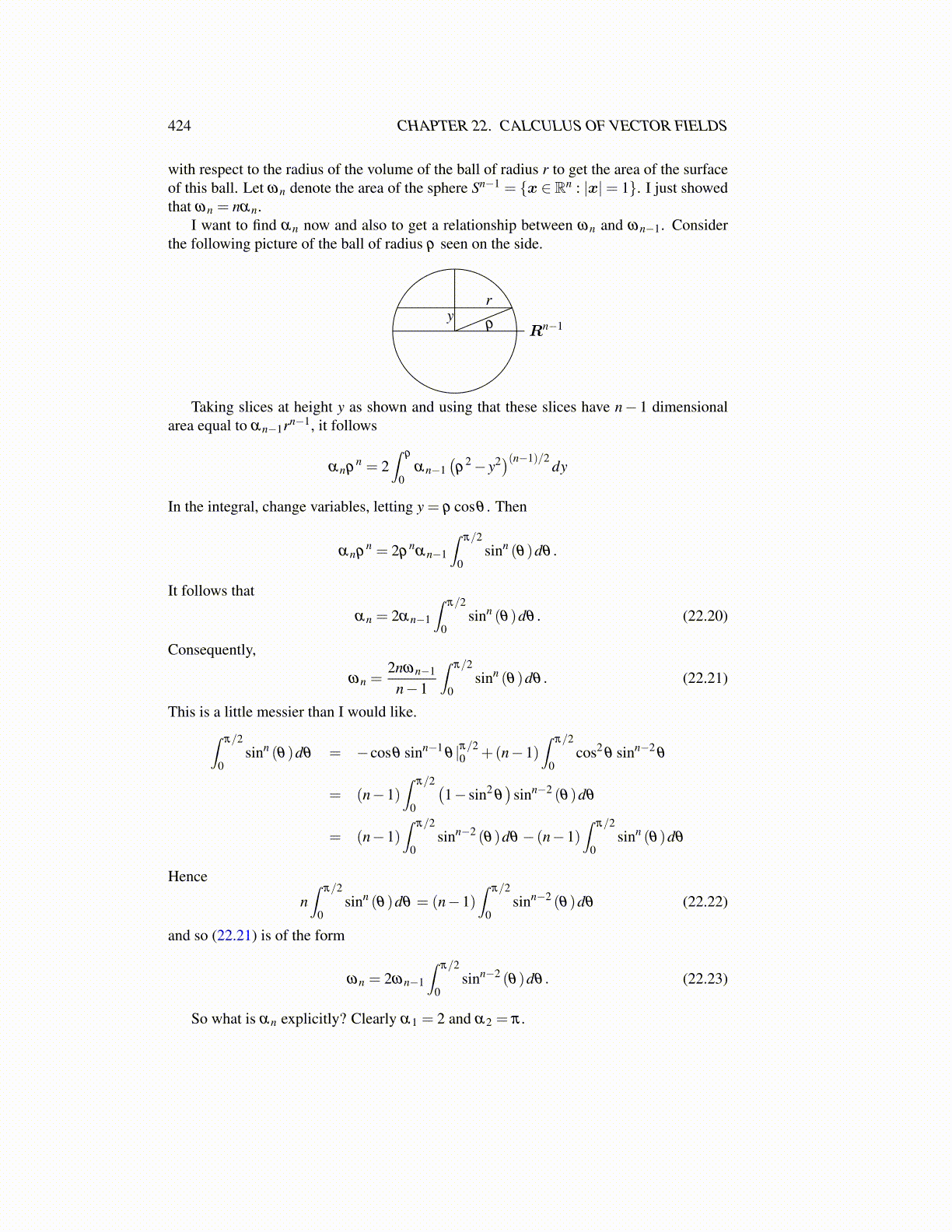
424 CHAPTER 22. CALCULUS OF VECTOR FIELDS
with respect to the radius of the volume of the ball of radius r to get the area of the surfaceof this ball. Let ωn denote the area of the sphere Sn−1 = {x ∈ Rn : |x|= 1}. I just showedthat ωn = nαn.
I want to find αn now and also to get a relationship between ωn and ωn−1. Considerthe following picture of the ball of radius ρ seen on the side.
yr
ρ Rn−1
Taking slices at height y as shown and using that these slices have n− 1 dimensionalarea equal to αn−1rn−1, it follows
αnρn = 2
∫ρ
0αn−1
(ρ
2− y2)(n−1)/2dy
In the integral, change variables, letting y = ρ cosθ . Then
αnρn = 2ρ
nαn−1
∫π/2
0sinn (θ)dθ .
It follows that
αn = 2αn−1
∫π/2
0sinn (θ)dθ . (22.20)
Consequently,
ωn =2nωn−1
n−1
∫π/2
0sinn (θ)dθ . (22.21)
This is a little messier than I would like.∫π/2
0sinn (θ)dθ = −cosθ sinn−1
θ |π/20 +(n−1)
∫π/2
0cos2
θ sinn−2θ
= (n−1)∫
π/2
0
(1− sin2
θ)
sinn−2 (θ)dθ
= (n−1)∫
π/2
0sinn−2 (θ)dθ − (n−1)
∫π/2
0sinn (θ)dθ
Hence
n∫
π/2
0sinn (θ)dθ = (n−1)
∫π/2
0sinn−2 (θ)dθ (22.22)
and so (22.21) is of the form
ωn = 2ωn−1
∫π/2
0sinn−2 (θ)dθ . (22.23)
So what is αn explicitly? Clearly α1 = 2 and α2 = π .